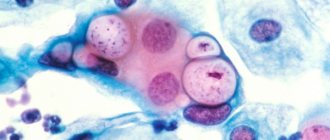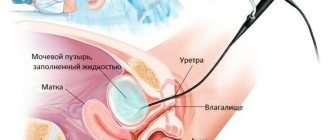The detection of coccobacillary flora in a smear indicates disorders in the female body.
Cost of services in our clinic
| Appointment with a gynecologist with the highest category | 1000 rub. |
| Consultative appointment with a doctor based on test results and ultrasound results | 500 rub. |
| Extended colposcopy | 1500 rub. |
| Amino test for bacterial vaginosis | 300 rub. |
| Medical abortion (all inclusive) | 4500 |
| Make an appointment by phone: 8-800-707-15-60 (toll-free) |
| *The clinic is licensed to remove tumors |
Normally, the microflora of the female vagina is inhabited by bifidobacteria, peptostreptococci and lactobacilli, each of which has the function of protecting against harmful microorganisms that are causative agents of various diseases. The development of coccobacillary flora can begin as a result of disruptions in the body and exposure to external factors.
What does such flora mean in gynecological analysis?
Under certain factors, the ratio of microorganisms changes, the beneficial flora is displaced or dies. The health of the female reproductive system is undermined due to developing pathologies (dysbacteriosis, STDs).
This ratio does not allow pathogenic microbes to negatively affect women's health.
Kokkovaya
What do cocci mean in a smear on the flora in women? Coccal flora is classified as opportunistic and includes a wide group of microorganisms.
The most common representatives of microflora:
- staphylococci;
- meningococci;
- streptococci;
- gonococci.
If cocci are found in a flora smear, the most dangerous are the first two microbes due to their ability to cause severe infectious diseases that affect the intestines, brain, and other organs.
Gonococci provoke the development of sexually transmitted diseases. The peculiarity of the coccal flora is its high resistance to antibiotics and heat.
What is the best way for women to wash themselves: you will find advice from a gynecologist in this material.
Treatment of urinary incontinence in older women is discussed in detail in this publication.
Bacillary
Bacillary flora in a smear - what is it? The variety of microflora includes both beneficial and pathogenic rod-shaped microorganisms.
Lactic acid maintains optimal biocenosis in the vagina, preventing the growth of harmful bacteria and fungi.
Dangerous representatives of bacilli in a flora smear include small rod flora - gram-negative microbes that can cause inflammatory reactions and dysbiosis of the genital tract.
Small rod flora reduces general and local immunity, slowing down the healing process.
Coccobacillary
Coccobacillary flora in a smear - what is it? Coccobacillary flora is characterized by a significant lack of beneficial microbes and the presence of a large number of bacteria, combining two types of pathogenic microorganisms - bacilli and cocci.
Coccobacillary flora can be represented by chlamydia, Haemophilus influenzae, and Gardnerella.
Such microorganisms cause serious diseases that are difficult to treat - chlamydia, hemophilus influenzae, colpitis, gardnerellosis.
If coccobacillary microflora is detected, you should seek medical help .
What should be normal?
In the absence of health problems, lactobacilli should occupy at least 95% of the smear, which is considered normal. Gram-variable flora is considered optimal, which is determined if the smear contains acceptable quantities of gram-positive and gram-negative bacteria.
If the test results contain such a term as polymorphic flora, then bacteria and viruses are present in large quantities in the material being studied. The establishment of moderate or significant flora occurs if there are infectious diseases, the identification of which requires additional diagnostic measures.
The predominance of coccobacillary elements in a smear may indicate the development of colpitis, bacterial vaginosis and other sexually transmitted diseases. If deviations from the permissible norm of cocci and bacilli are detected in the smear, additional diagnostics are carried out to identify pathologies.
The development of the disorder is often accompanied by the occurrence of dysbacteriosis. In this case, additional tests and medical imaging may also be needed.
Variants of norm and deviations
When such microflora is detected in a smear, the leading role is given to the number of pathogens.
The number of coccobacilli in a flora smear can be characterized as:
- insignificant - less than 0.5-1%;
- moderate - from 2 to 8%;
- increased - from 8-10 to 50%;
- abundant - more than 50% or complete absence of lactobacilli.
The absence or meager content of coccobacillary flora is a variant of the norm.
If the bacilli flora is abundantly present in a gynecological smear, this is an alarming sign, accompanied by deviations in women’s health: mucous or purulent discharge, abdominal pain, discomfort, and menstrual irregularities.
Bacillary flora
The definition of the concept “flora” specifies a certain community located in a certain environment. Bacillary flora is a community of bacilli and bacteria (for example, streptococci, lactobacilli, leukocytes, erythrocytes, staphylococci, ureaplasma) in the vagina in a certain concentration.
This entire community gets along peacefully under the condition of the norm (the norm is set based on long-term observation). Otherwise they say that there is a normal microflora.
With a reduced bacillary flora, a woman may develop bacterial vaginosis. This increases the risk of developing other diseases. There are also cases when the vaginal microflora is too aggressive, which can lead to problems with conceiving a child.
Did you like the article? Share with friends:
You may also be interested
Additional diagnostics
The main way to confirm excess coccobacillary flora is to take a smear for laboratory testing .
A smear is taken from the vagina and cervix. This is necessary to identify the degree of activity of the pathology.
Additional diagnostic methods are used:
- colposcopy for the purpose of diagnostic examination of the vulva, vagina, and its walls to identify changes in the mucosa;
- Ultrasound of the pelvic organs to identify the condition of the inner layer of the uterus;
- PCR diagnostics of the infectious agent;
- general blood test as an indicator of general condition.
The results of all diagnostic procedures are brought together and analyzed, then a diagnosis is made indicating the cause of the disease .
What can a low number of leukocytes in a woman’s blood mean? Our article will answer the question.
Cutting pain in the left lower abdomen in women - what does it signal? Find out in this publication.
If a woman has pain in the lower abdomen on the right, what are the possible causes? Read in this material.
Bacilli in the human body. Microflora analysis
The article describes the influence of bacteria on the human body, explains the basic principles of studying bacteria and the consequences of changes in the composition of the microflora of the female genital organs.
Bacilli in the human body. Microflora analysis
To live a full life, you need to have good health. Regular exercise, healthy foods, all this improves immunity. It is then that a person can freely interact with the world around him and the bacteria, viruses, microbes and other microorganisms living in it. Currently, science knows about 3000 species of microorganisms. Today we will talk about bacteria called bacilli.
Bacilli are rod-shaped bacteria involved in sporulation. They form intracellular spores, which are necessary for reproduction and preservation of the species in unfavorable conditions . Bacillus and other bacteria are saprophytes that live in the soil. Saprophytes are organisms that feed on the remains of plants and animals and participate in the process of converting organic substances into inorganic ones.
Anaerobes and aerobes are two forms of existence of microorganisms on planet Earth. The first are microorganisms that live and function in an environment that does not contain free oxygen. This type of microorganism is called anaerobic. The second are microorganisms that require free oxygen to function.
Treatment of pathology
It is necessary to treat coccobacillary flora , otherwise adverse health consequences may develop, the most dangerous of which is infertility.
Therapy is prescribed after the examination results and includes:
- suppression and destruction of pathogenic microorganisms with antibiotics and antiseptics;
- colonization with the “correct” microflora;
- restoration of local and general immunity.
At the first stage, the following is prescribed:
- Metronidazole (if Gardnerella is present) - 500 mg twice a day, course of administration is 7 days;
- Ceftriaxone intramuscularly (for chlamydia, gonococci) - 0.5 g twice a day for a course of 7-10 days;
- Terzhinan (for vaginal dysbiosis) in the form of vaginal tablets - one piece at a dosage of 500 mg at night for a course of 10 days;
- Amoxiclav orally 0.5 g 2 times a day for a course of 7 days.
The next stage is no less important; its goal is to create an optimal biocenosis in the vagina.
The most effective drugs are Acylact, Vaginorm-S, Vagilak.
Types of microflora in the vagina
During the examination, laboratory assistants identify squamous epithelium, Dederlein bacilli, cocci, leukocytes, and erythrocytes in a smear for flora. An increase in the number of certain microorganisms indicates the development of various diseases or pathological processes.
Since the therapy will be different, it is important to correctly determine what predominates: polymorphic rod flora in the smear, normal or mixed.
Mixed flora
When performing bacteriological culture, the results are considered only in relation to the examination data. Additionally, a smear for oncocytology is performed for early detection of cervical cancer (regardless of the presence of complaints).
Rod flora in a smear
Microscopic examination is carried out to determine the number of beneficial and pathogenic bacteria, rods and other organisms in the vagina. Based on the results of the analysis, it is determined whether there are problems with the reproductive system, individual organs, or whether the patient is healthy.
Small rod flora indicates the presence of gram-negative bacteria. They reduce the body's defenses. As a result, the immune system cannot suppress the vital activity of pathogenic representatives on its own. An abundant content of rod flora indicates the development of inflammation.
Patients are recommended to undergo complex treatment, which includes drugs to restore normal vaginal microflora.
Rod-shaped organisms also indicate the development of gardnerellosis and dysbacteriosis. Treatment in this case is selected individually, taking into account the characteristics of the clinical picture.
Dederlein rods (gram-positive) are included in the useful category. These are lactobacilli, and the smear should contain at least 95% (10 7 CFU). They are responsible for creating an acidic environment on the vaginal wall, necessary for the fertilization process to occur. These microorganisms ensure the cleanliness of the genital tract. Thanks to them, the pathogens of trichomoniasis and gonorrhea do not have the opportunity to reproduce.
Rod flora
Polymorphic rod flora is considered pathogenic. These are microorganisms that provoke the development of vaginal dysbiosis. When conducting a microscopic analysis together with them, an increased content of leukocytes capable of phagocytosis and a sharp decrease in the number of Dederlein rods are revealed. As a result, an inflammatory process develops.
Danger level during pregnancy
Detection of coccobacillary flora in a smear in pregnant women is not uncommon, which is due to hormonal imbalance and decreased immunity.
Treatment is required , otherwise there is a high risk of transmission of infection to the child (during passage through the birth canal), development of hypoxia in the fetus, serious inflammation of the uterus in a woman, including metroendometritis.
Therapy includes gentle antimicrobial drugs in the form of medications for external use: Klacid gel and Metronidazole in the form of suppositories .
After suppressing harmful bacteria, it is necessary to use products containing lacto- and bifidobacteria (suppositories and medicinal tampons).
Additionally, pregnant women are prescribed vitamin complexes (Elevit, Complivit mama) and eubiotics (Linex, Bifiform) for general strengthening of the body and prevention of dysbiosis.
We looked at what coccal, bacillary and coccobacillary flora are in a smear in women, what the treatment for such a condition is.
The detection of coccobacillary flora indicates serious problems in the female reproductive system.
The presence of infectious diseases or dysbiosis of the genital organs is a reason for immediate examination and treatment.
If you consult a gynecologist in a timely manner, you can successfully get rid of pathogenic flora within a month without negative consequences.
Having learned the test results, patients are often interested in: bacillary flora in a smear - what is it?
To answer this question, you need to understand what mechanisms in the body are responsible for the function of protection against pathogenic organisms.
Coccobacillary flora in a smear in women - what is it and does it need to be treated?
Coccobacilli are a special type of bacteria that belongs to the pathogenic flora in the smear.
Their presence in a smear from the genital tract is not normal and may indicate the development of bacterial vaginosis and sexually transmitted diseases in a woman. What does coccal, bacillary and coccobacillary flora mean in a smear in women, including during pregnancy, what are the causes of abundant and poor microflora, how to treat this condition?
What does such flora mean in gynecological analysis?
Under certain factors, the ratio of microorganisms changes, the beneficial flora is displaced or dies. The health of the female reproductive system is undermined due to developing pathologies (dysbacteriosis, STDs).
This ratio does not allow pathogenic microbes to negatively affect women's health.
Kokkovaya
What do cocci mean in a smear on the flora in women? Coccal flora is classified as opportunistic and includes a wide group of microorganisms.
The most common representatives of microflora:
- staphylococci;
- meningococci;
- streptococci;
- gonococci.
If cocci are found in a flora smear, the most dangerous are the first two microbes due to their ability to cause severe infectious diseases that affect the intestines, brain, and other organs.
Gonococci provoke the development of sexually transmitted diseases. The peculiarity of the coccal flora is its high resistance to antibiotics and heat.
Bacillary
Bacillary flora in a smear - what is it? The variety of microflora includes both beneficial and pathogenic rod-shaped microorganisms.
Lactic acid maintains optimal biocenosis in the vagina, preventing the growth of harmful bacteria and fungi.
Dangerous representatives of bacilli in a flora smear include small rod flora - gram-negative microbes that can cause inflammatory reactions and dysbiosis of the genital tract.
Small rod flora reduces general and local immunity, slowing down the healing process.
Coccobacillary
Coccobacillary flora in a smear - what is it? Coccobacillary flora is characterized by a significant lack of beneficial microbes and the presence of a large number of bacteria, combining two types of pathogenic microorganisms - bacilli and cocci.
Coccobacillary flora can be represented by chlamydia, Haemophilus influenzae, and Gardnerella.
Such microorganisms cause serious diseases that are difficult to treat - chlamydia, hemophilus influenzae, colpitis, gardnerellosis.
If coccobacillary microflora is detected, you should seek medical help .
Variants of norm and deviations
When such microflora is detected in a smear, the leading role is given to the number of pathogens.
The number of coccobacilli in a flora smear can be characterized as:
- insignificant - less than 0.5-1%;
- moderate - from 2 to 8%;
- increased - from 8-10 to 50%;
- abundant - more than 50% or complete absence of lactobacilli.
The absence or meager content of coccobacillary flora is a variant of the norm.
If the bacilli flora is abundantly present in a gynecological smear, this is an alarming sign, accompanied by deviations in women’s health: mucous or purulent discharge, abdominal pain, discomfort, and menstrual irregularities.
Additional diagnostics
The main way to confirm excess coccobacillary flora is to take a smear for laboratory testing .
A smear is taken from the vagina and cervix. This is necessary to identify the degree of activity of the pathology.
Additional diagnostic methods are used:
- colposcopy for the purpose of diagnostic examination of the vulva, vagina, and its walls to identify changes in the mucosa;
- Ultrasound of the pelvic organs to identify the condition of the inner layer of the uterus;
- PCR diagnostics of the infectious agent;
- general blood test as an indicator of general condition.
The results of all diagnostic procedures are brought together and analyzed, then a diagnosis is made indicating the cause of the disease .
Treatment of pathology
It is necessary to treat coccobacillary flora , otherwise adverse health consequences may develop, the most dangerous of which is infertility.
Therapy is prescribed after the examination results and includes:
- suppression and destruction of pathogenic microorganisms with antibiotics and antiseptics;
- colonization with the “correct” microflora;
- restoration of local and general immunity.
At the first stage, the following is prescribed:
- Metronidazole (if Gardnerella is present) - 500 mg twice a day, course of administration is 7 days;
- Ceftriaxone intramuscularly (for chlamydia, gonococci) - 0.5 g twice a day for a course of 7-10 days;
- Terzhinan (for vaginal dysbiosis) in the form of vaginal tablets - one piece at a dosage of 500 mg at night for a course of 10 days;
- Amoxiclav orally 0.5 g 2 times a day for a course of 7 days.
The next stage is no less important; its goal is to create an optimal biocenosis in the vagina.
The most effective drugs are Acylact, Vaginorm-S, Vagilak.
Tampons soaked in a solution of Lactobacterin and Bifidumbacterin are no less effective. The course to restore the flora lasts at least 14 days.
The third stage is aimed at increasing local and general immunity. The use of immunomodulators (topically and orally, in the form of injections) for 10-14 days will correct the immune capabilities towards strengthening.
The following medications are used:
- Genferon or Viferon (suppositories);
- Interferon (intramuscular);
- Wobenzym (oral).
Danger level during pregnancy
Detection of coccobacillary flora in a smear in pregnant women is not uncommon, which is due to hormonal imbalance and decreased immunity.
Treatment is required , otherwise there is a high risk of transmission of infection to the child (during passage through the birth canal), development of hypoxia in the fetus, serious inflammation of the uterus in a woman, including metroendometritis.
Therapy includes gentle antimicrobial drugs in the form of medications for external use: Klacid gel and Metronidazole in the form of suppositories .
After suppressing harmful bacteria, it is necessary to use products containing lacto- and bifidobacteria (suppositories and medicinal tampons).
Additionally, pregnant women are prescribed vitamin complexes (Elevit, Complivit mama) and eubiotics (Linex, Bifiform) for general strengthening of the body and prevention of dysbiosis.
We looked at what coccal, bacillary and coccobacillary flora are in a smear in women, what the treatment for such a condition is.
The detection of coccobacillary flora indicates serious problems in the female reproductive system.
The presence of infectious diseases or dysbiosis of the genital organs is a reason for immediate examination and treatment.
If you consult a gynecologist in a timely manner, you can successfully get rid of pathogenic flora within a month without negative consequences.
Source: https://beautyladi.ru/kokkobacillyarnaya-flora-v-mazke/
Microflora research
A smear for the bacillary flora is periodically taken from women for preventive purposes.
If there are no health complaints, doctors perform a smear once every three months during a routine gynecological examination. In this case, a smear is taken from the vagina and cervix.
More often, a smear is prescribed if the patient has complaints of unpleasant nagging pain in the lower abdomen, itching sensations in the genitals, pain during intercourse, or vaginal discharge with an unusual consistency and unpleasant odor.
An unscheduled smear for bacillary flora is prescribed if pregnancy is planned.
The test is considered safe, so it is also performed on pregnant women for additional health monitoring. During pregnancy, a smear is done at least three times.
Since the bacillary microflora of the vagina and uterus changes significantly during long-term use of antibiotics and other potent drugs, it is advisable to conduct research at the end of a long course of treatment.
A study of bacillary microflora must also be carried out if a woman has a new sexual partner, with whom intimate life is supposed to be open. Tests are prescribed after any unprotected sexual intercourse.
To prepare for a smear, you need to follow a number of recommendations. 3-5 days before the study you should abstain from any sexual relations.
The analysis is carried out no earlier than three days after a transvaginal ultrasound examination and examination by a gynecologist.
The analysis is not carried out during menstruation, as well as during an acute form of an infectious disease. A couple of days before the smear, it is better to stop using topical contraceptives, lubricants, douching and treating the genitals with antiseptic drugs.
On the day of the bacillary microflora study, you should not wash with soap or intimate gels.
Sometimes it is necessary to check the concentration of certain bacteria on a specific day of the menstrual cycle.
To determine the date of menstruation and ovulation, it is recommended to use special calendars or applications on your mobile phone.
If a woman can provide the doctor with a menstrual schedule several months in advance, a smear test will be scheduled on a suitable day.
Specific recommendations for preparing for a smear for bacillary microflora should be obtained from a gynecologist or from the laboratory where the diagnosis will be made.
Commercial medical centers usually provide booklets that contain all the necessary information to prepare for a specific test.
Treatment of bakvaginosis
Treatment of bacterial vaginosis is aimed at restoring the balance of vaginal microflora. If there are laboratory changes without symptoms of dysbiosis, a woman should be treated only in the following cases:
- 1Installation of the IUD.
- 2Before pelvic surgery, including before abortion.
- 3 Pregnancy (history of miscarriages, premature births, unfavorable outcomes).
Treatment differs between pregnant and non-pregnant women. In the first case, only local remedies are used. In the first half of pregnancy, Clindamycin cream and Hexicon suppositories are used. In the second half of gestation, treatment with Terzhinan, Neo-Penotran suppositories, and Metrogyl vaginal gel is allowed. Outside of pregnancy, the list of drugs is much wider. It is acceptable to use Ornidazole tablets orally as a first-line drug (FDA classification, USA). An alternative is Metronidazole, Terzhinan suppositories, Neo-Penotran and Clindamycin cream.
Dysbacteriosis is considered cured when the clinical symptoms of the pathology disappear. Therapy is not provided for male sexual partners, but the couple must abstain from sexual intercourse for the entire period of treatment.
For recurrent vaginosis in a woman, the Solcotrichovac vaccine can be used. The effectiveness of the use of vaginal 5% liniment Cycloferon has also been proven. Herbal decoctions and douching done at home are ineffective.
Analysis procedure
Every woman has had a smear test for bacillary flora at least once, but not everyone knows what it is.
This test is a simple and painless procedure. The gynecologist takes samples for examination during a gynecological examination with a special spatula or phytobrush and places them in a special container.
Typically, a smear is taken from the vaginal walls and cervix. Biological material is collected in a gynecological chair.
Bacillus - what is it?
To live a full life, you need to have good health. Regular exercise, healthy foods, all this improves immunity. It is then that a person can freely interact with the world around him and the bacteria, viruses, microbes and other microorganisms living in it. Currently, science knows about 3000 species of microorganisms. Today we will talk about bacteria called bacilli.
Bacilli are rod-shaped bacteria that participate in sporulation. They form intracellular spores, which are necessary for reproduction and preservation of the species in unfavorable conditions . Bacillus and other bacteria are saprophytes that live in the soil. Saprophytes are organisms that feed on the remains of plants and animals and participate in the process of converting organic substances into inorganic ones.
Anaerobes and aerobes are two forms of existence of microorganisms on planet Earth. The first are microorganisms that live and function in an environment that does not contain free oxygen. This type of microorganism is called anaerobic. The second are microorganisms that require free oxygen to function.
Bacteria in flora
A bacillus is a specific bacterium whose shape resembles a rod. Such bacteria can form peculiar chains, uniting with each other at their ends.
It is important to note that the presence of lactobacilli in the vagina does not indicate inflammatory processes.
Under normal conditions, the vagina should contain a certain number of bacilli.
Bacteria are involved in the production of lactic acid, which performs a protective function and fights various infections and harmful fungi.
If there are not enough lactobacilli in the bacillary microflora of the vagina, vaginosis and other dangerous infections may occur.
The normal acidic environment becomes closer to neutral, and protective functions are performed to a lesser extent.
If the normal concentration of bacilli deviates upward, the acidic environment of the vagina becomes too aggressive.
In this case, the activity of sperm is inhibited and they die before they reach the egg. Due to aggressive bacillary microflora, a woman cannot become pregnant.
Indicators of bacillary microflora may differ in samples taken from different points. In the certificate, all samples have their own symbols.
Indicators of bacillary microflora in the vagina are written near the “V” symbol. The bacterial composition of the cervix is indicated after the “C” sign. The Latin letter "U" is used to represent the urethra.
In some cases, some samples may show normal bacilli content, while others reveal pathogenic processes. In a smear in women, the doctor must evaluate the totality of the data obtained.
To assess the health status and bacillary flora of the reproductive and urinary system organs, it is customary to distinguish four degrees of vaginal cleanliness.
The first and second degrees of purity are considered normal. Moreover, only the first indicates a healthy body.
With the second degree of purity, women are at risk of encountering some violations. This result can be considered transitional.
The third and fourth degrees of frequency indicate the presence of pathology. Moreover, in the fourth degree we are talking about a serious inflammatory process and an imbalance of the bacillary microflora.
The bacillary microflora of the vagina, urethra and cervix can be brought into order by prescribing the correct treatment and following prevention recommendations.
To restore normal levels of lactobacilli, it is necessary to avoid hypothermia and maintain general and local immunity.
During sexual intercourse, serious attention should be paid to protective equipment.
After long-term use of antibiotics, it is necessary to apply preventive treatment measures aimed at preventing vaginal dysbiosis.
Restoration of bacillary microflora involves three stages. First of all, pathogenic microorganisms are eliminated.
The therapy then restores the bacilli to normal levels. After this, measures are prescribed to restore immunity.
Bacillary flora in a smear - what is it: normal or abnormal?
Having learned the test results, patients are often interested in: bacillary flora in a smear - what is it?
To answer this question, you need to understand what mechanisms in the body are responsible for the function of protection against pathogenic organisms.
Microflora research
A smear for the bacillary flora is periodically taken from women for preventive purposes.
If there are no health complaints, doctors perform a smear once every three months during a routine gynecological examination. In this case, a smear is taken from the vagina and cervix.
More often, a smear is prescribed if the patient has complaints of unpleasant nagging pain in the lower abdomen, itching sensations in the genitals, pain during intercourse, or vaginal discharge with an unusual consistency and unpleasant odor.
An unscheduled smear for bacillary flora is prescribed if pregnancy is planned.
The test is considered safe, so it is also performed on pregnant women for additional health monitoring. During pregnancy, a smear is done at least three times.
Since the bacillary microflora of the vagina and uterus changes significantly during long-term use of antibiotics and other potent drugs, it is advisable to conduct research at the end of a long course of treatment.
A study of bacillary microflora must also be carried out if a woman has a new sexual partner, with whom intimate life is supposed to be open. Tests are prescribed after any unprotected sexual intercourse.
To prepare for a smear, you need to follow a number of recommendations. 3-5 days before the study you should abstain from any sexual relations.
The analysis is carried out no earlier than three days after a transvaginal ultrasound examination and examination by a gynecologist.
The analysis is not carried out during menstruation, as well as during an acute form of an infectious disease. A couple of days before the smear, it is better to stop using topical contraceptives, lubricants, douching and treating the genitals with antiseptic drugs.
On the day of the bacillary microflora study, you should not wash with soap or intimate gels.
Sometimes it is necessary to check the concentration of certain bacteria on a specific day of the menstrual cycle.
READ Procedure for taking a smear for flora in men
To determine the date of menstruation and ovulation, it is recommended to use special calendars or applications on your mobile phone.
If a woman can provide the doctor with a menstrual schedule several months in advance, a smear test will be scheduled on a suitable day.
Specific recommendations for preparing for a smear for bacillary microflora should be obtained from a gynecologist or from the laboratory where the diagnosis will be made.
Commercial medical centers usually provide booklets that contain all the necessary information to prepare for a specific test.
Analysis procedure
Every woman has had a smear test for bacillary flora at least once, but not everyone knows what it is.
This test is a simple and painless procedure. The gynecologist takes samples for examination during a gynecological examination with a special spatula or phytobrush and places them in a special container.
Typically, a smear is taken from the vaginal walls and cervix. Biological material is collected in a gynecological chair.
In some cases, if a study of the microflora of the urinary system is required, a smear from the urethra may be additionally prescribed.
This type of examination is characterized by a greater degree of discomfort. Some patients complain of pain during the examination itself and for several days after it when urinating.
A smear on the bacillary microflora lasts only a few minutes, and if you follow all the doctor’s recommendations, the pain can be minimized.
If the study of bacillary microflora is prescribed to girls who have never had sexual intercourse, then the material is collected without the use of a special gynecological speculum through an opening in the hymen.
This method is acceptable for studying the bacillary microflora of the vagina of minor patients.
READ Normal columnar epithelium in a smear
:
The biological material obtained during the smear process is dried using special technologies and sent to a research laboratory.
Before testing samples, they are stained with special substances to make the particles easier to distinguish during visual inspection under a microscope.
Different bacteria, entering into a chemical reaction with reagents, acquire different colors, making it easy to identify a specific type of microorganism.
It is easy to distinguish different bacteria because they absorb dyes to different degrees.
In some types of research, part of the biological material is also studied under a microscope in liquid form.
This method must be used to detect microorganisms that are capable of movement.
In order for the microflora study to be complete and comprehensive, its results should be compared with analyzes of a sexual partner or spouse.
Sometimes a partner’s tests can show disorders and infections that were not detected during a woman’s smear.
Minor deviations in indicators may be associated with the characteristics of a particular organism and should not cause serious concern in the absence of pathogens of serious infections.
Bacteria in flora
A bacillus is a specific bacterium whose shape resembles a rod. Such bacteria can form peculiar chains, uniting with each other at their ends.
It is important to note that the presence of lactobacilli in the vagina does not indicate inflammatory processes.
Under normal conditions, the vagina should contain a certain number of bacilli.
Bacteria are involved in the production of lactic acid, which performs a protective function and fights various infections and harmful fungi.
If there are not enough lactobacilli in the bacillary microflora of the vagina, vaginosis and other dangerous infections may occur.
The normal acidic environment becomes closer to neutral, and protective functions are performed to a lesser extent.
If the normal concentration of bacilli deviates upward, the acidic environment of the vagina becomes too aggressive.
In this case, the activity of sperm is inhibited and they die before they reach the egg. Due to aggressive bacillary microflora, a woman cannot become pregnant.
READ red blood cells in a smear in women
Indicators of bacillary microflora may differ in samples taken from different points. In the certificate, all samples have their own symbols.
Indicators of bacillary microflora in the vagina are written near the “V” symbol. The bacterial composition of the cervix is indicated after the “C” sign. The Latin letter "U" is used to represent the urethra.
In some cases, some samples may show normal bacilli content, while others reveal pathogenic processes. In a smear in women, the doctor must evaluate the totality of the data obtained.
To assess the health status and bacillary flora of the reproductive and urinary system organs, it is customary to distinguish four degrees of vaginal cleanliness.
The first and second degrees of purity are considered normal. Moreover, only the first indicates a healthy body.
With the second degree of purity, women are at risk of encountering some violations. This result can be considered transitional.
The third and fourth degrees of frequency indicate the presence of pathology. Moreover, in the fourth degree we are talking about a serious inflammatory process and an imbalance of the bacillary microflora.
The bacillary microflora of the vagina, urethra and cervix can be brought into order by prescribing the correct treatment and following prevention recommendations.
To restore normal levels of lactobacilli, it is necessary to avoid hypothermia and maintain general and local immunity.
During sexual intercourse, serious attention should be paid to protective equipment.
After long-term use of antibiotics, it is necessary to apply preventive treatment measures aimed at preventing vaginal dysbiosis.
Restoration of bacillary microflora involves three stages. First of all, pathogenic microorganisms are eliminated.
The therapy then restores the bacilli to normal levels. After this, measures are prescribed to restore immunity.
Are you here:
21016 0 (2 3,00 out of 5)
Source: https://moydiagnos.ru/issledovaniya/mazok/batsillyarnaya-flora.html











